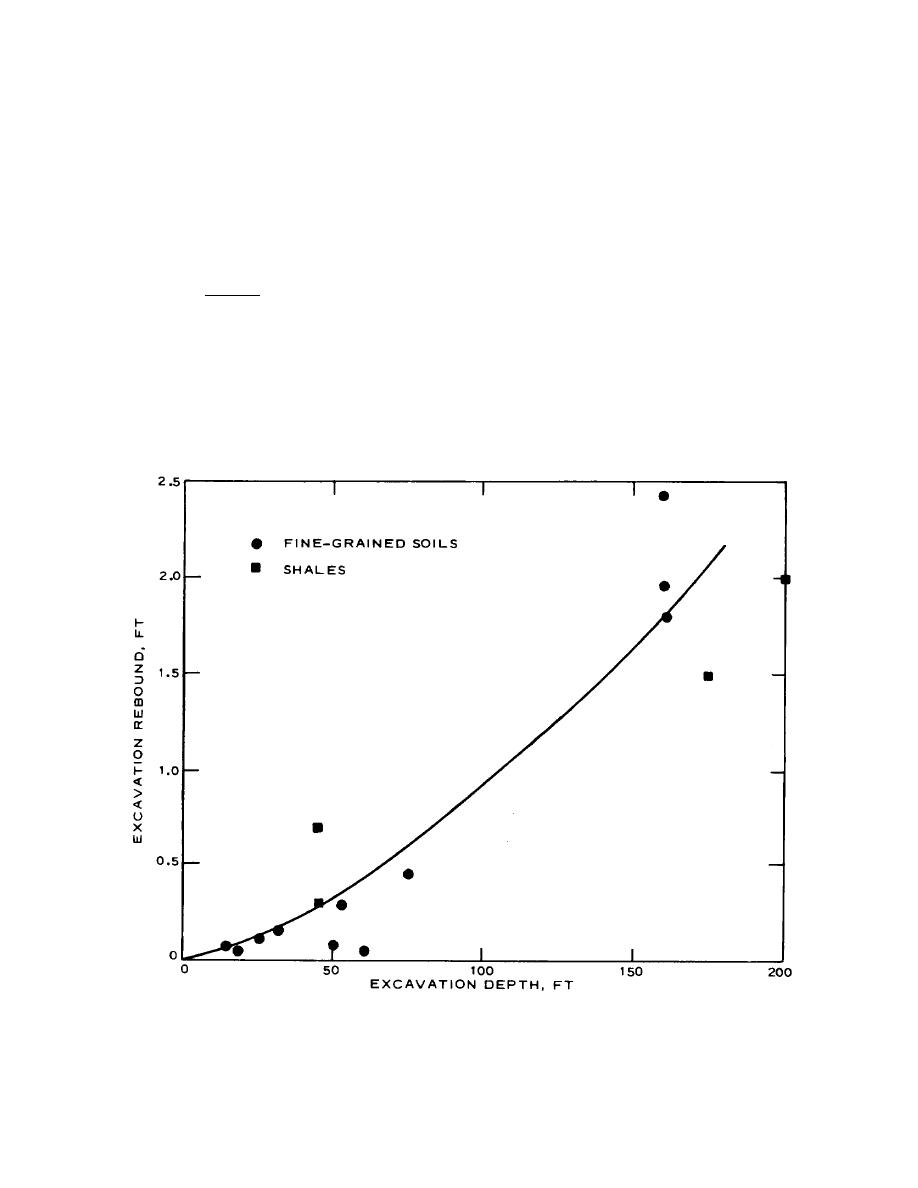
TM 5-818-1 / AFM 88-3, Chap. 7
conditions are nonuniform. Tilting can be estimated from
cohesionless soils, settlement will generally be less than
settlement calculations for different locations of the
0.5 percent of excavation depth. Loss of ground due to
excavation. Control of tilt is not generally necessary but
uncontrolled seepage or densification of loose
can be provided by piles or piers, if required. Bearing
cohesionless soils will result in larger settlements.
capacity is not usually important unless the building is
Surface settlements adjacent to open cuts in soft to firm
partially compensated and founded on clay. The factor
clay will occur because of lateral yielding and movement
of safety against bearing failure is calculated (see chap 6
of soil beneath the bottom of the cut. Figure 11-3 can be
for quit) and compared with the final total soil stress
used to estimate the magnitude and extent of settlement.
using the building load, qo, less the excavation stress
as follows:
11-4.
Underpinning.
a. Structures
supported
by
shallow
(11-1)
FS =
qult
foundations or short piles may have to be underpinned if
q0 - γD
located near an excavation.
Techniques for
underpinning are depicted in figure 11-4. The most
widely accepted methods are jacked down piles or piers,
The factor of safety should be between 2.5 and 3.0 for
which have the advantage of forming positive contact
dead load plus normal live load.
with the building foundation since both can be
i.
Settlement
adjacent
to
prestressed. The use of drilled piers is of more recent
depends on the soil type and the excavation support
vintage and is more economical where it can be used. In
system method employed (chap 14). With properly
sandy soils, chemical
installed strutted or anchored excavations in
U. S. Army Corps of Engineers
Figure 11-2. Excavation rebound versus excavation depth.
11-3



 Previous Page
Previous Page
